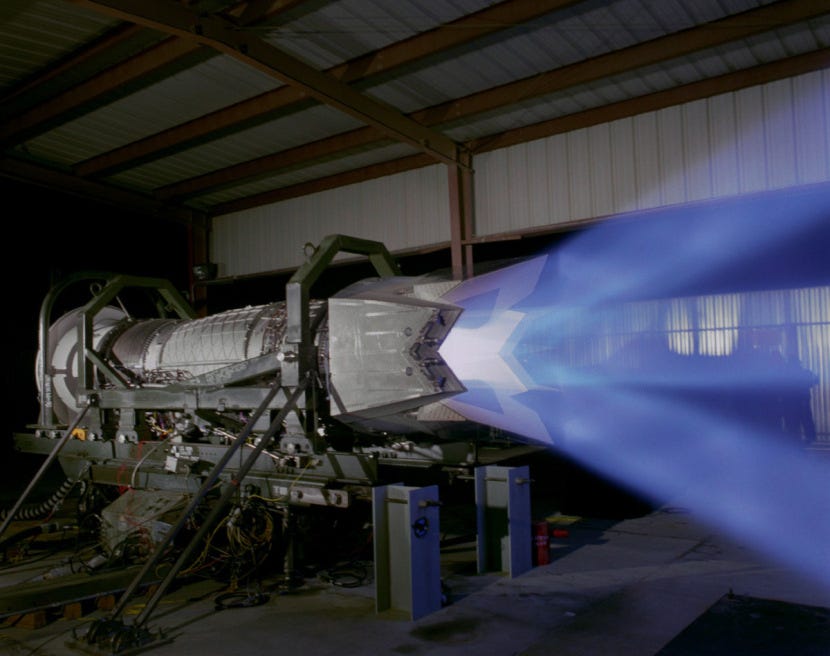Why did USAF choose the F-22? Black Widow Friday
YF-23 Versus YF-22 & the story of the Martin XB-68
Today we are running our biggest ever discount on The Hush-Kit Book of Warplanes. This discount offers 25% off pledges and pre-orders up to £75 and runs until midnight tonight. The code is BOOKFRIDAY2020. Runs out midnight. Pre-order here
YF-23 Versus YF-22: Why did USAF choose the F-22?
Jim Smith was working in a technical liaison role in the British Embassy in Washington during the high stakes competition between the YF-22 and YF-23 to provide USAF with its next super fighter. In this role, he attended the YF-22 roll-out, and also wrote an analysis of the two aircraft.
Save the Hush-Kit blog. Our site is absolutely free. If you’ve enjoyed an article you can donate here. At the moment our contributors do not receive any payment but we’re hoping to reward them for their fascinating stories in the future.
Why did USAF choose the F-22 and was this the right choice?
My analysis observed the obvious differences in size, planform and shaping for two aircraft designed to meet the same requirements. From material available at the time, it was evident that the performance and range requirements were as demanding as the signature requirements, exceeding those of the F-15 while having a signature of the order of 1% of that aircraft.
I concluded that the YF-23 design looked to have been optimised for low signature, and that to achieve this, the wing design had been compromised, resulting in a less efficient wing design, and ending up with a larger, heavier design. At the time Aviation Week reported a wing area of 950 sq ft compared to 830 sq ft for the YF-22.
The high-risk of thrust vectoring
The use of the 2-D vectoring nozzle, integrated with the FCS is an essential enabler for the YF-22, as this allows the agility and manoeuvre requirements to be met with a smaller airframe. At the time, this represented a significant risk for the design, as no current US exemplars existed although thrust-vectoring experimental systems had been flown using external paddle arrangements, incompatible with a low-signature solution. Apart from low-speed manoeuvre, thrust vectoring can also allow supersonic trim drag and signature to be reduced, as control surfaces can remain un-deflected and in line with the wing to reduce head-on RCS.
The YF-22 looked to me to have been designed to meet the manoeuvre and range requirements, and then shaped, packaged and integrated to have the lowest signature that could be achieved with the selected configuration. The fuselage shaping and planform appears less sophisticated than that of the YF-23, but I judged at the time that Lockheed had the know-how to meet the signature requirements, and, in delivering a smaller, lighter solution, stood well-placed in the competition provided the 2-D thrust-vectoring nozzles could be integrated successfully with the fcs.
In making this judgement, I was aware that there is a strong correlation between mass and cost at a given technology level. Although the technology decisions made by the designers were somewhat different, the smaller, lighter Lockheed design was likely also to come in at a lower cost (at least as viewed through the lense of this cost-mass correlation).
Was this the right decision? It is of course, impossible to know. But in my judgement, USAF expectations do appear to have been met by the developed F-22 Raptor.
Two Up
“Two Up is a collection of anecdotes and stories drawn from our more than 50-year experience of photographing, flying, analysing, designing and generally working with aircraft. The 26 episodes in the book cover everything from schoolboy expeditions to photograph aircraft in England; to Ron’s visit as Westland’s Chief Future Project Engineer to Russia and Poland to examine their helicopter industry; my learning to fly aerobatics in the Chipmunk; Ron’s flight to Oshkosh on Concorde; and many more.
Two Up Down Under focuses on a visit Ron made to Australia to enjoy an aviation and photographic road trip around the Riverina, leading to our visit to the Australian Antique Aeroplane Association’s fly-in at Echuca, Victoria. There is something for everyone in here, whether you are interested in Volkswagen kombis, recreational and antique aircraft in Australia, flying, photography or classic cars. In his later career, he was a well-regarded analyst working primarily on Land Systems for BAe Systems. Both Ron and I have been private pilots. He has owned a number of interesting aircraft, including a 1938 Tipsy B, and is also a winner of the Dawn to Dusk Trophy. My flying experience highlights include Chipmunk aerobatics and flying recreational aircraft in Australia.”
Save the Hush-Kit blog. Our site is absolutely free and we have no advertisements. If you’ve enjoyed an article you can donate here. At the moment our contributors do not receive any payment but we’re hoping to reward them for their fascinating stories in the future.
Want to see more stories like this: Follow my vapour trail on Twitter: @Hush_kit
Today we are running our biggest ever discount on The Hush-Kit Book of Warplanes . This discount offers 25% off pledges and pre-orders up to £75 and runs until midnight tonight. The code is BOOKFRIDAY2020. Runs out midnight. Pre-order here
Share this:
Martin XB-68 (1954) ‘Steel-eye wingspan’
The extremely sleek XB-68 would have been largely built from steel to soak up the immense heat of flight at Mach 2.4. It was an extremely ambitious design, combining a very high top speed with a long range and a beyond state-of-the-art inertial guidance bombing and navigation system. This was pretty advanced stuff for 1954 and it was predicted to take until 1963 to get it into operational service. The USAF couldn’t wait that long and cancelled it in favour of the far more modest Douglas B-66 Destroyer.











